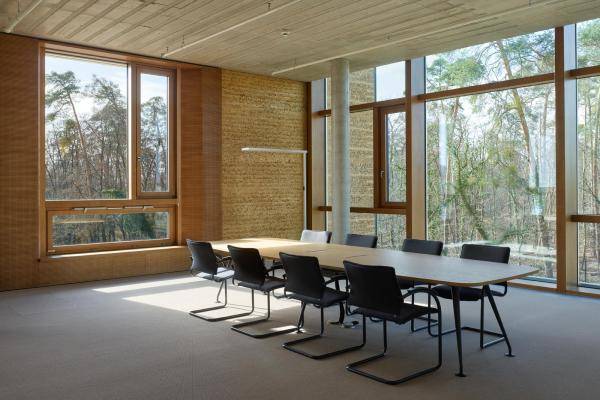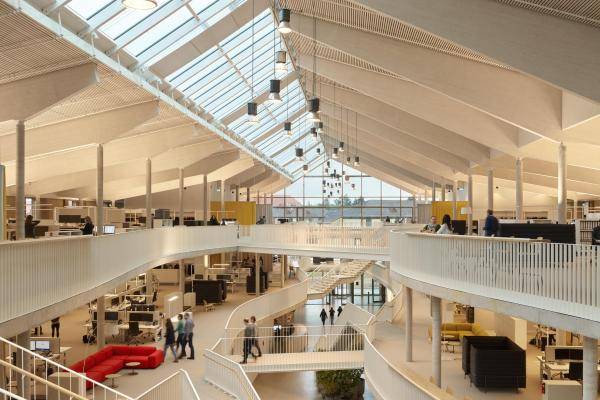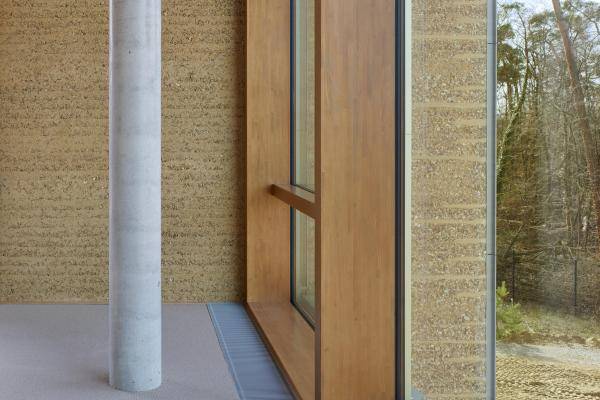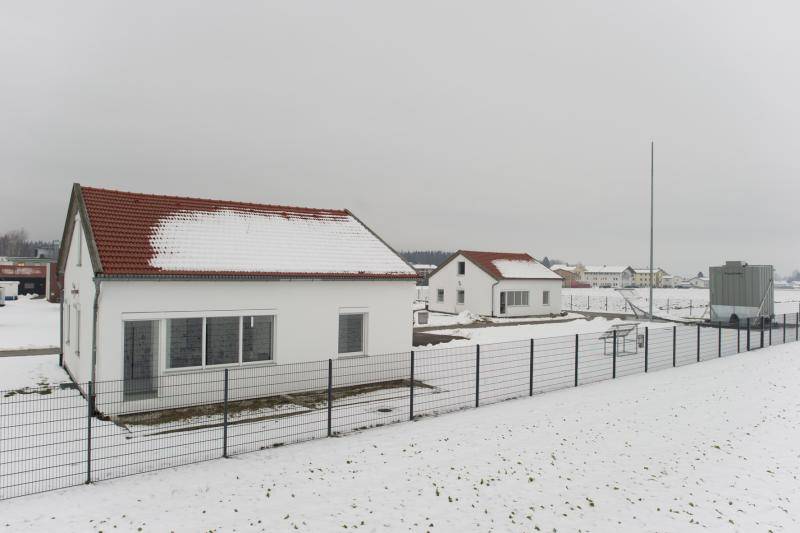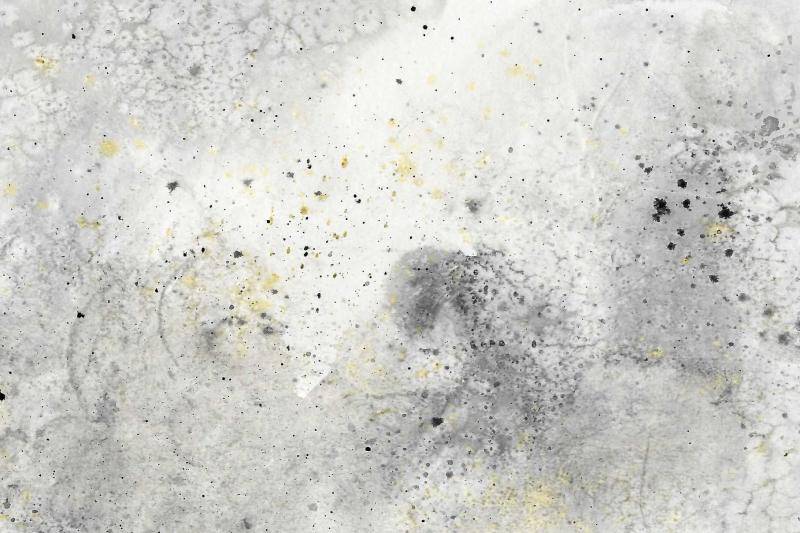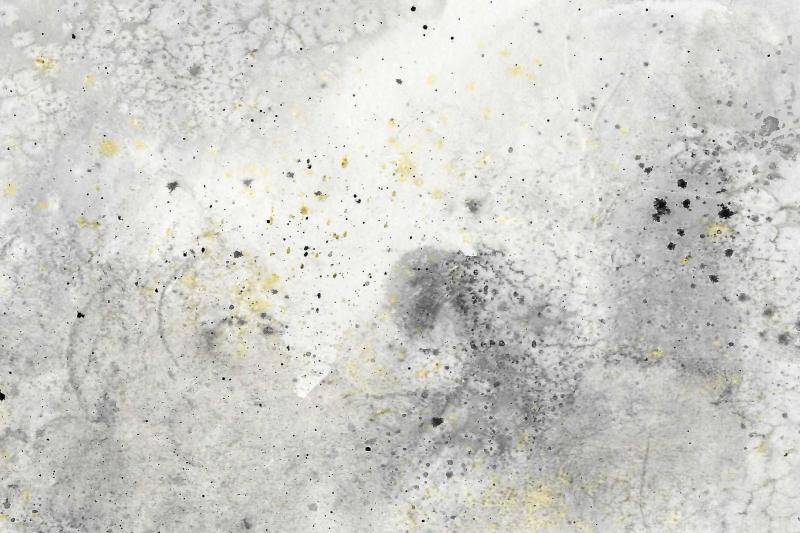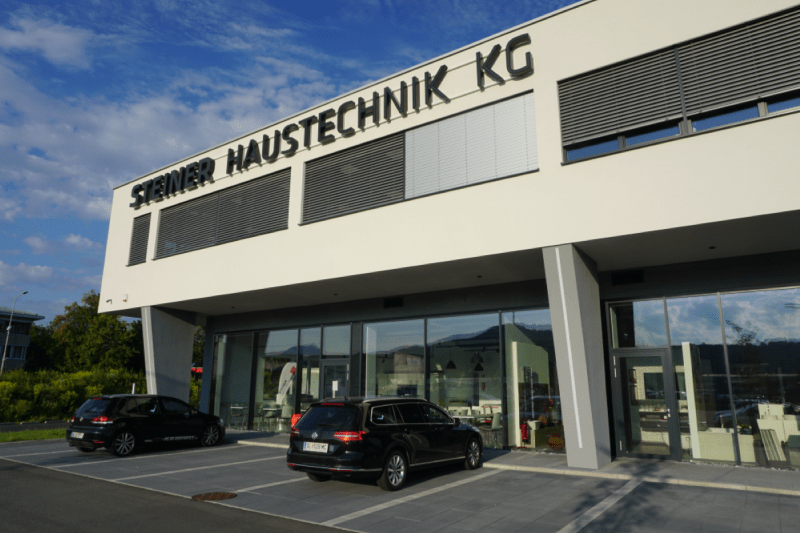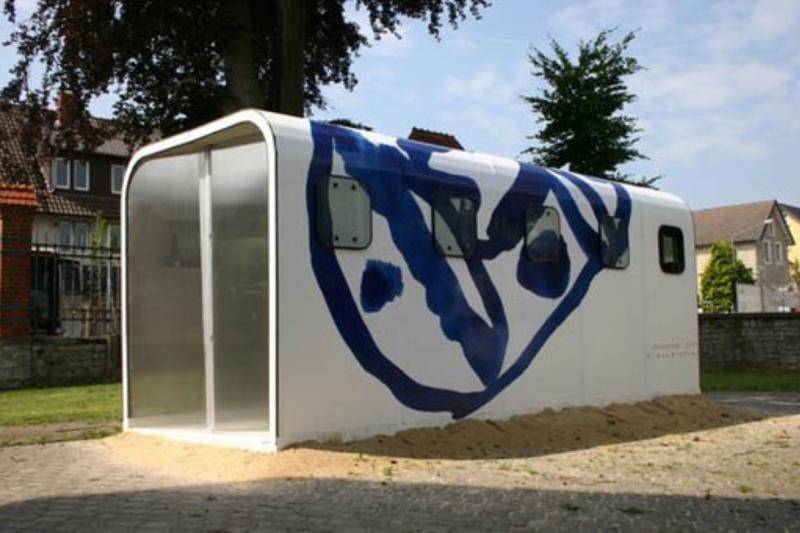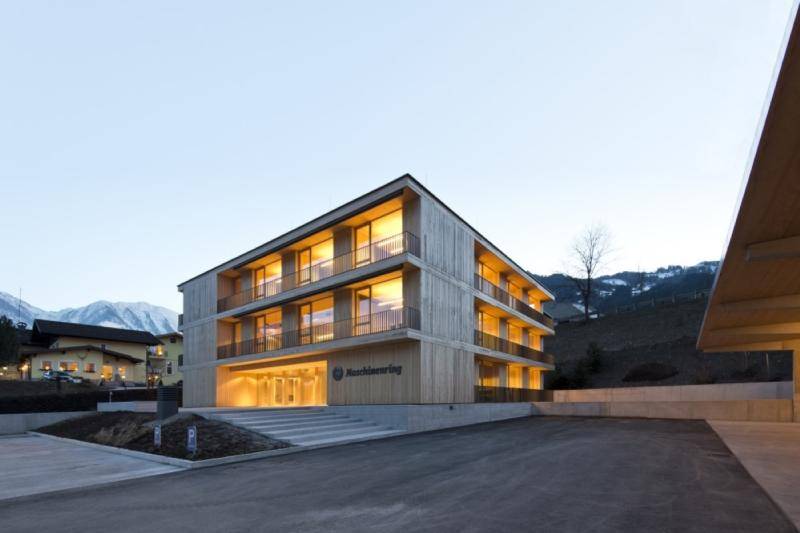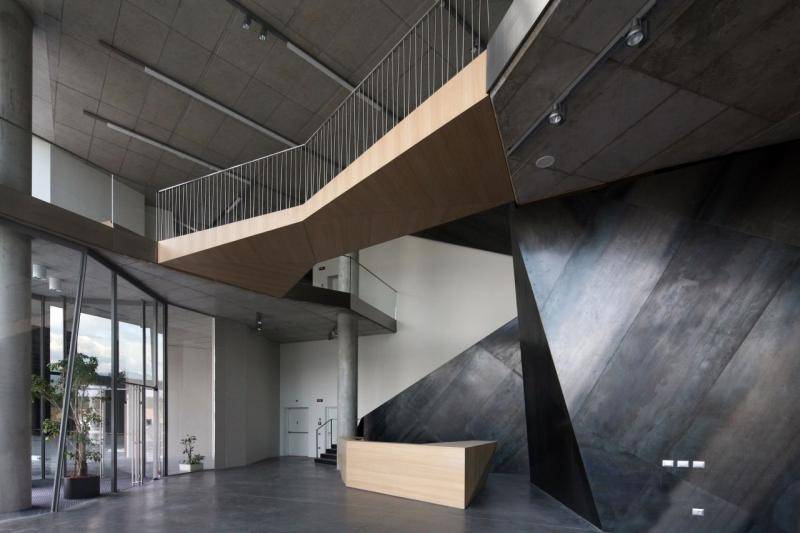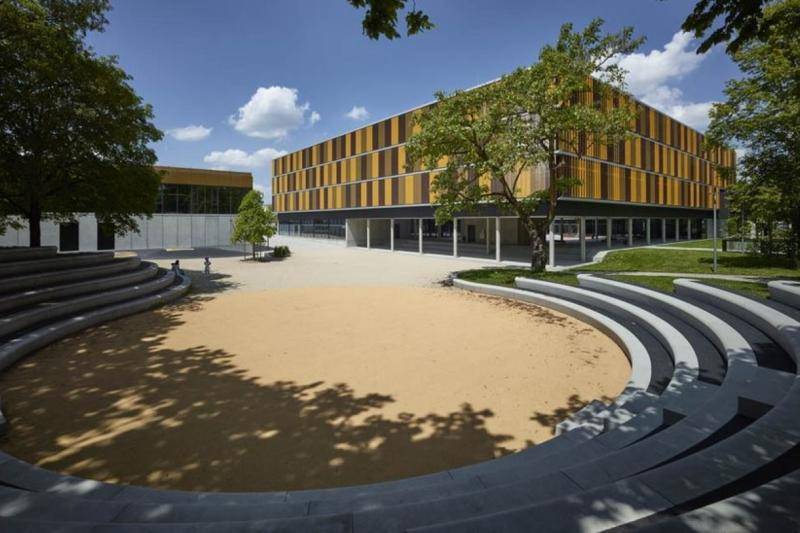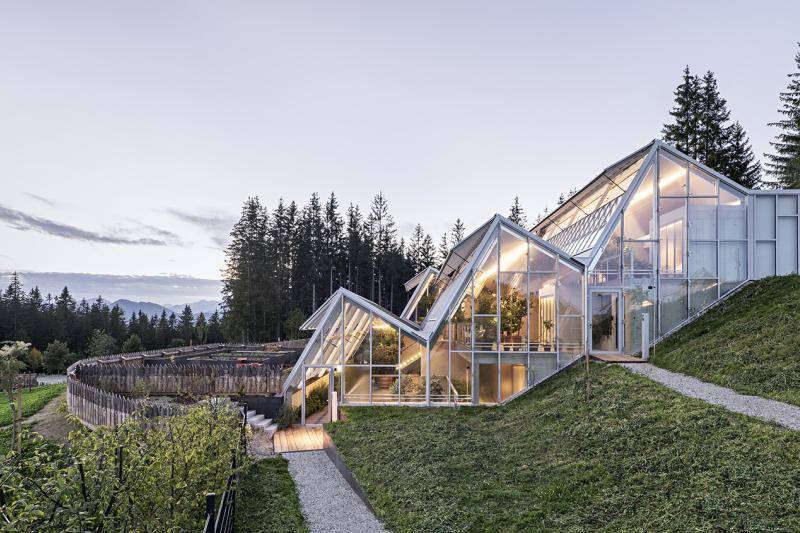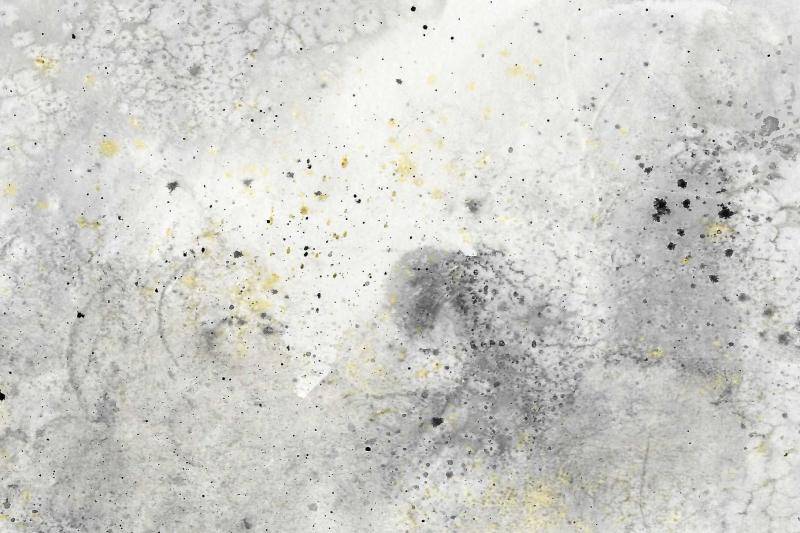Alnatura Campus
For the 55,000 square metre Alnatura Campus, the former barracks site in the southwest of Darmstadt was extensively renaturalised. Sealed areas were broken up and the resulting material was used in the open spaces.
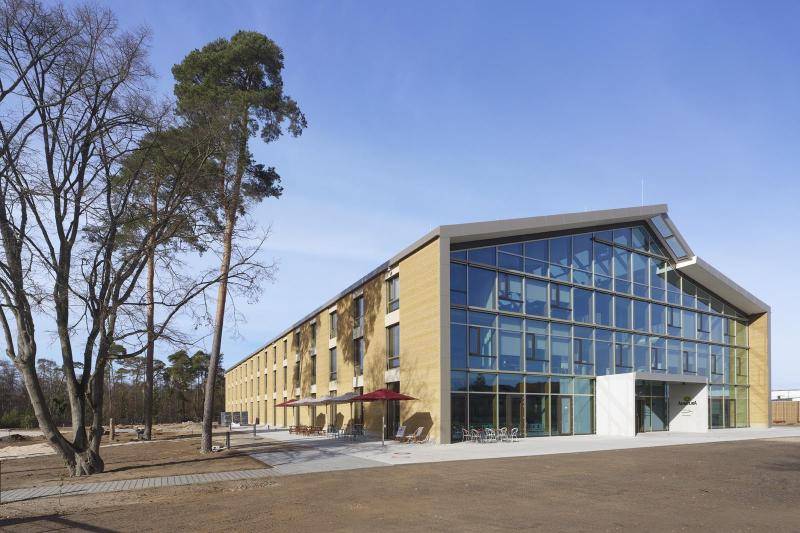
The building
The heart of the campus is the Alnatura Arbeitswelt, a light, open office landscape for up to 500 employees.
With a gross floor area of 13,500 square metres, it is Europe's largest office building made of clay. Clay regulates the indoor climate in a natural way and has a positive effect on the room acoustics. An earth channel that supplies the climate-neutral building with fresh air from the adjacent forest, a rainwater cistern, photovoltaic and geothermal systems as well as bright rooms, flexible workplaces meet the highest ecological requirements.
The entire ground floor functions as a meeting point, a space for communication that allows visitors and staff to meet in an uncomplicated way. Stairs, bridges and walkways provide connections to and between the curved office levels and create horizontal and vertical neighbourhoods.
The transformation of the former military site into a campus symbolises the Alnatura guiding principle of creating something meaningful for people and the earth. As a connecting element between forest and city, the campus invites people to experience nature and organic agriculture in an urban setting.
The working environment is a high-performance building with low energy consumption and optimised interior comfort, which has been created in a resource-conserving way using natural or recycled materials. A special feature here is the rammed earth (clay) façade, which is the first in the world to be equipped with a geothermal wall heating.
The building's heating needs are covered by the geothermal-powered wall heating system. On around 60 days a year, natural gas is also used to support the heating system at peak load times and to heat the shower water.
Around 25% of the electricity demand is covered by a photovoltaic system on the roof.
Heat from the earth
Thanks to the preconditioned supply air from the earth duct, the building's additional heating and cooling requirements are very low. The storage mass of the clay walls and the concrete ceiling ensure a stable, balanced temperature level. On hot summer days, the extra high rooms and the evaporative cooling of the clay help to avoid heat islands in the work area. The Alnatura working environment with its 69cm thick loam walls thus manages very well without mechanical cooling devices during the summer. In winter, however, it needs additional heat. The most efficient way to heat rooms is to spread heat via radiation.
Therefore, heating coils are rammed into the clay walls of the building, which are fed with hot water from renewable sources such as the geothermal probes and from the waste heat recovery of the kitchen technology.
The rammed earth façade
In collaboration with Martin Rauch and Transsolar, an innovative rammed earth (clay) wall was created. The individual rammed earth blocks (3.5m x 1.0m) were layered on the north and south façades to form 16 wall panels, each 12m high. For the first time in the world, the rammed earth wall was covered with a geothermal wall heating system. Another special feature is the core insulation of the prefabricated rammed earth elements, which were installed directly next to the construction site: The 17cm thick insulation consists of foam glass gravel, a recycled material. The outer rammed earth layer is 38cm thick, the inner 14cm. Overall, the structure has a thickness of 69cm and achieves a good U-value of 0.35W/(m2-K). The 12m high rammed earth walls are self-supporting and only fixed to the floor slabs with anchors. The walls contain not only clay from the Westerwald and lava gravel from the Eifel, but also recycled material from the Stuttgart 21 tunnel excavation.
Alnatura: A resource-neutral new building as a research project of the Deutsche Bundesstiftung Umwelt.
In recent decades, research in the building sector has focused on reducing energy requirements in building operation. This has resulted in buildings that have very low energy requirements in operation (e.g. passive houses), but whose energy expenditure required for construction has not been addressed or calculated. This approach has increasingly led to more systems technology and thus more material in the building. New ground was broken in the planning of the Alnatura working environment. Here, not only was the energy consumption in the building operation evaluated in planning terms, but all resources required for construction, maintenance and deconstruction were taken into account in the design planning. This new, holistic approach was seen as exemplary and was funded by the German Federal Environmental Foundation DBU. By evaluating grey energy at an early stage, it was possible to develop resource-saving solutions for the individual components during the planning of the Alnatura Campus. In cooperation with the Technical University of Munich, planning parameters were developed that will also help future projects to become resource-neutral.
